Manjar for Yemanjá
Divine coconut custard cups, between pudding and flan, and fit for a queen.

Today, Brazilians, particularly those from the North and Northeast, honor Yemanjá—the Mother of the Waters. A magical figure, she embodies motherhood, the life-giving force, and protection. Her essence is reflected in that rhythmic ebb and flow, cradling those who seek solace, guidance, and strength.
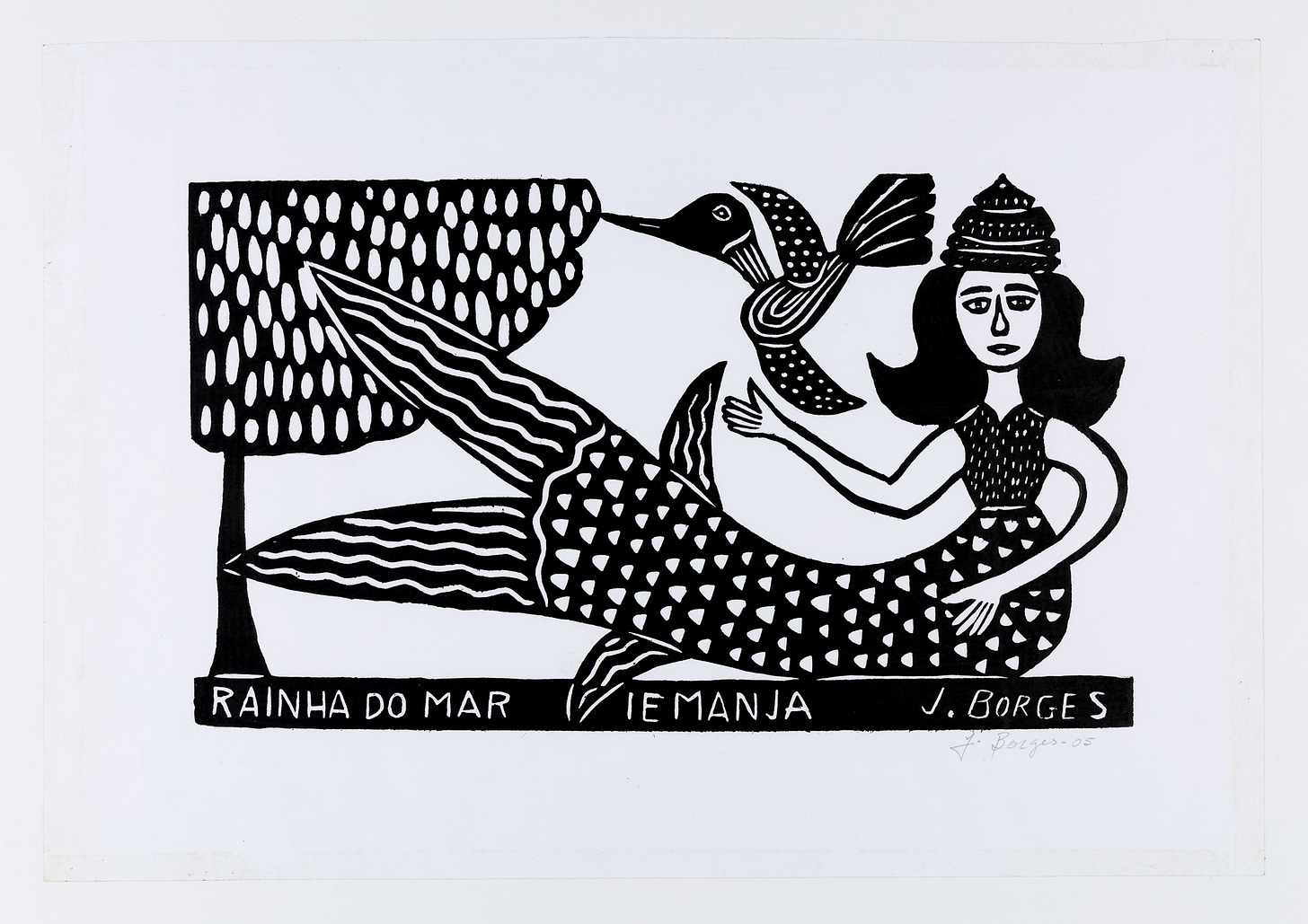
Yemanjá is an orixá, a deity, and a spiritual being—regal, mermaid-like, crowned with shells, and radiating beauty. Revered in Afro-Brazilian religions like Candomblé and Umbanda, her essence carries the weight of African traditions brought to Brazil through the inhumane transatlantic slave trade, especially those of the Yoruba people. To me, Yemanjá is also a reminder of the unbroken tie between the past and the present, a symbol that enriches the cultural identity of my beautiful Brasil.
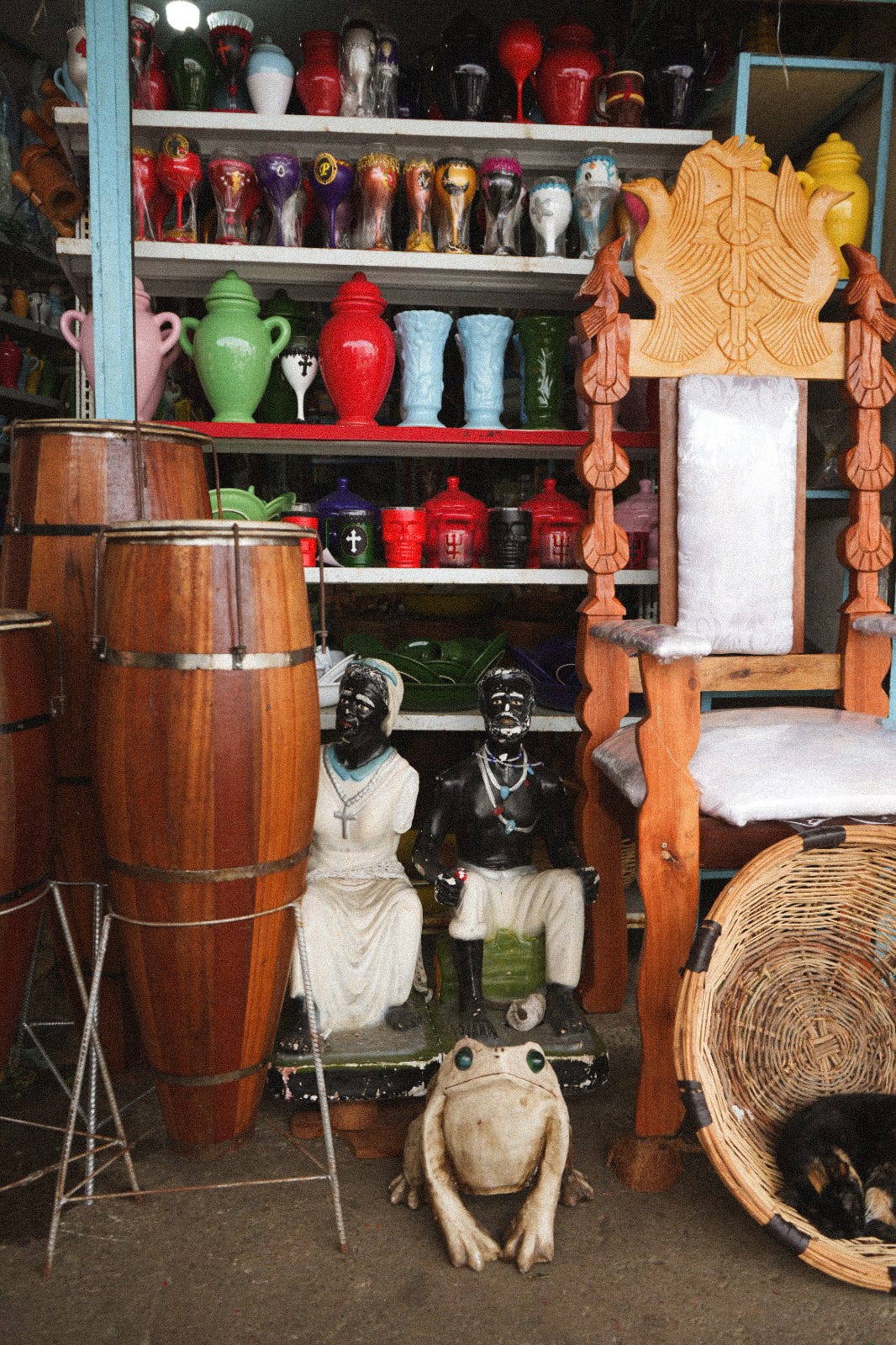
Yemanjá’s bond with water runs deep in a country that is home to the 16th longest coastline in the world and holds 12% of the planet’s fresh water. (The Amazon River alone carries about 20% of the world’s river flow—something I take particular pride in, as you may imagine).
As the queen of the oceans, she commands the waves and holds the power to heal, protect, and bring abundance. Fishermen, who rely on the sea’s generosity, often invoke her name, trusting in her grace to bring them a plentiful catch (and later delicious soups) and safe passage home. Her energy is often invoked by those who seek protection, or even guidance in navigating life’s tumultuous waters.
Although I’m neither a fisherwoman nor a particularly religious person, I woke up feeling inspired to write and share my admiration for Yemanjá, whom Doug and I have admired for quite a few years now because, well:
I imagine we could all use some help navigating life’s tumultuous waters right now;
The whimsical idea of being sheltered by this powerful, mermaid-like force has always captivated me.
In the years following the pandemic, my family gradually migrated from the heart of the Amazon to the stunning Northeastern coast of Alagoas. We fell in love with this part of Brazil during a vacation and knew that one day we’d want to call it home. The warmth of the people here, accepting us fully, made us feel embraced, and now, Alagoas is the place I proudly call my immediate Brazilian home.
Every time I’m in Alagoas, I feel a deep connection to the water, the environment, and the culture. There's a profound respect for traditions that I didn’t grow up with—like this one—but that resonate with me today. I’ve embraced them as my own, and I find it fascinating how they’ve enriched my life.
Just as I’ve been shaped by this place, I hope, with time and luck, to contribute my own cultural heritage to it, because I believe true growth lies in exchange. I feel the same way about my home in the U.S., and I pray (including to Yemanjá) that this same phenomenon—the warmth of being accepted and celebrated just as I am—never stops, no matter where I am.

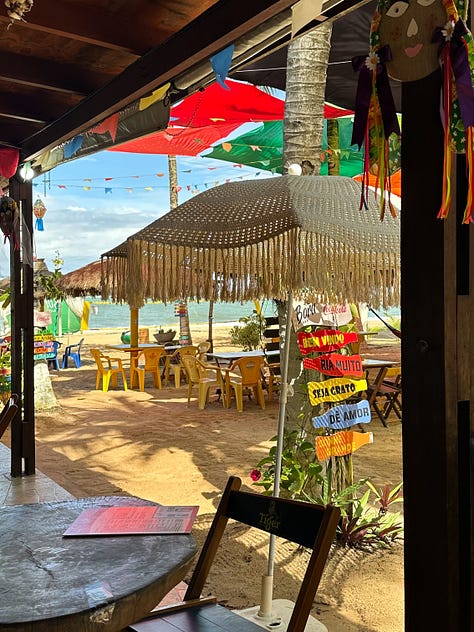
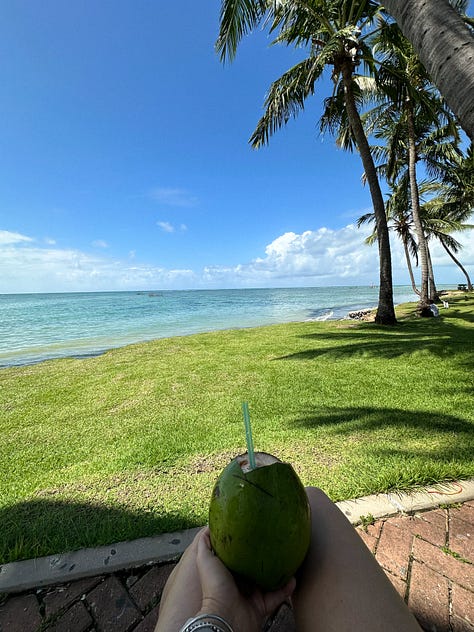
You know I am all about celebrations, and one of the traditions I love the most about the celebration of Yemanjá and all the other orixás, is the one of making an oferenda, which is an offering, a deeply spiritual and symbolic act, rooted in respect, gratitude, and devotion. The offerings are often made to honor the orixá, seek guidance, or request blessings.
The oferendas are based on elements that resonate with each orixá. Yemanjá, for example, prefers offerings that are white and blue and when edible, sweet, like fruit. And they’re always beautiful and elegant (like her)—flowers with perfume, for instance. These offerings can be physical or symbolic.
For Yemanjá, when they’re physical, they’re released into the sea (in an environmentally conscious way, of course). For other orixás, they might be placed on an altar or in a sacred space, and I must warn you, they require a ceremony of utmost respect.
I’ve always found it incredibly beautiful, the connection these offerings have with the land, because sometimes (and historically speaking), nothing more than food could be offered. So you get rice with fish, beautiful cut pieces of sugarcane, rice pudding, honey-glazed fruits, cassava cakes, coconuts, and coconut-based sweets like Manjar (continue reading for the recipe), shrimp or crab dishes. To me, there’s something poetic and profound about this mix of intent, prayers, gratitude, and unshakable faith and belief.
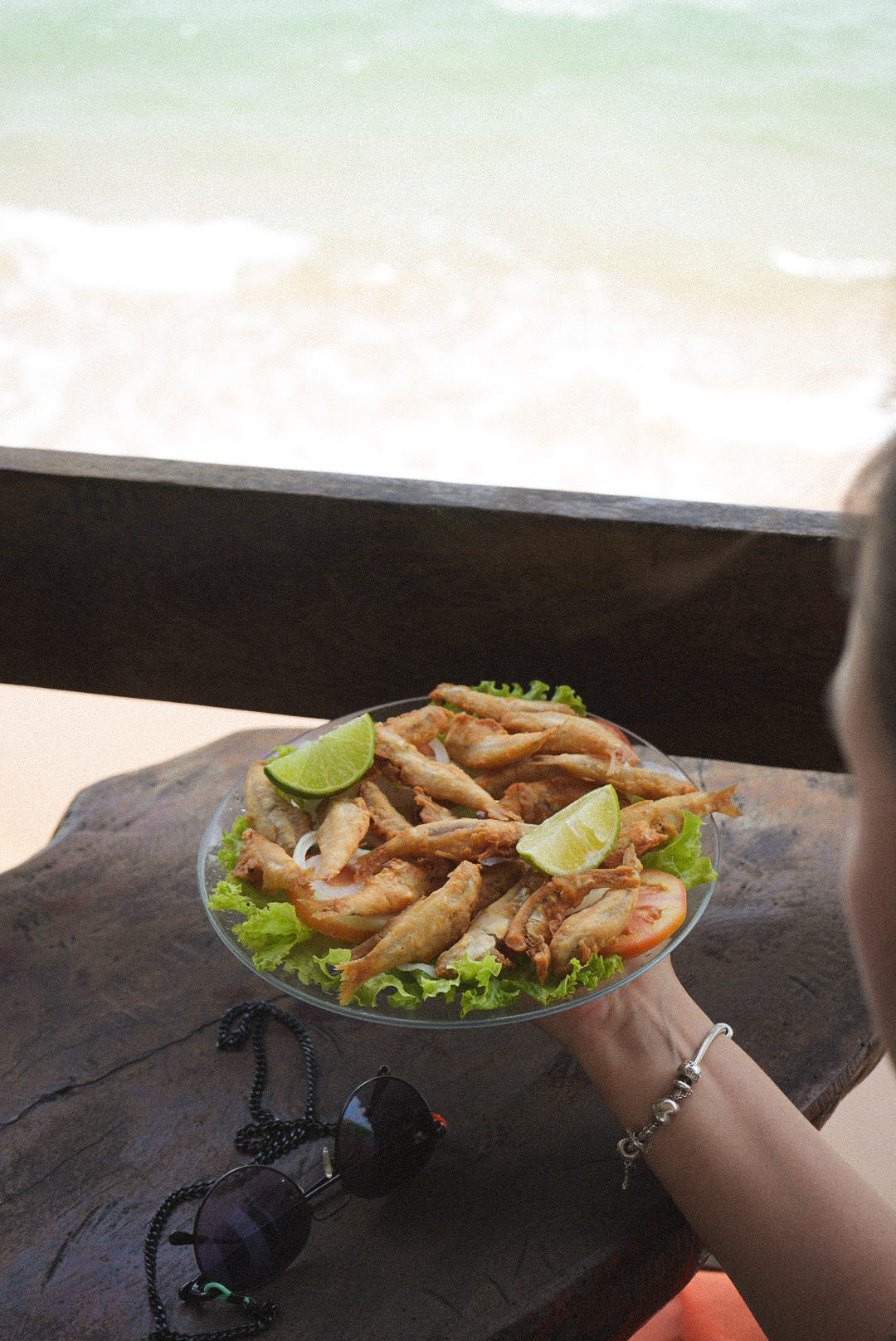
That act of humble faith expressed through food has always felt transformative to me. It’s a way of seeking love in return, through abundance—a concept that sticks with me, especially in those who have so little to share. It’s a beautiful paradox, finding generosity in places where it’s least expected, capable of opening hearts to invite change.
It's the idea of offering more of what's good, our own idea of what's enriching. We certainly could do with more of that.
I’ve been reflecting a lot on my country, my people, my culture, and our nation's beliefs. As I write these words, listening to a beautiful song in my mother tongue, I feel immense gratitude for the cultural richness I have chosen to carry with me. And as I think of you—who reads these words, open to learning from them, and willing to embrace me and my story—I’m truly thankful. Thank you for offering yourself here, for being open to receiving what I share.
I am also thankful that at some point Yemanjá was brought to Brasil and became part of my country. I’m not a religious person by any means, but I would certainly welcome the guidance of the Mother of the Seas to help me sail through in this other place I consider home—an ocean across from Brazil, the choppy waters I find myself in.
Today, I’ll be washing my feet and thighs in the cold Pacific waters of California, thanking her for all the gifts in my life, offering her Manjar, and pleading for strength to continue sharing what I believe is worth it.
I encourage you to experiment with offering (in many aspects of your life), knowing that Yemanjá, in all her generosity, will be there to embrace and guide you, just as she has been doing for me.
Odoyá!
The oferenda I often choose to honor Yemanjá is Brazilian Manjar de Coco, which, with my French culinary background—excusez-moi—I can’t help but add a little je ne sais quoi. So, these are, in fact, now Coconut Pots de Crème—a recipe passed down from my mom.
These unpretentious little cups of custard, somewhere between pudding and flan, are meant to be served warm with plenty of stewed dried fruit on top. As you glide your spoon into the velvety custard, the fruity syrup bejewels the whole thing, making for a creamy, rich, and unforgettable spoonful.
Traditional Pots de Crème—by that, I mean the French version, not my half-blood ones—are made with eggs, or at least egg yolks. My mom's version, however, is egg-free, so feel free to adapt the title if you think I'm getting a little too revolutionary here.
While Brazilian Manjar de Coco or Manjar Branco (with Portuguese and Middle Eastern influences) uses almost the same ingredients in different proportions, it’s beautifully set in a mold and, frankly, it’s quite a different experience. I absolutely love it, and when I have the time to go through the whole drama of unmolding it properly, it’s always my pick.
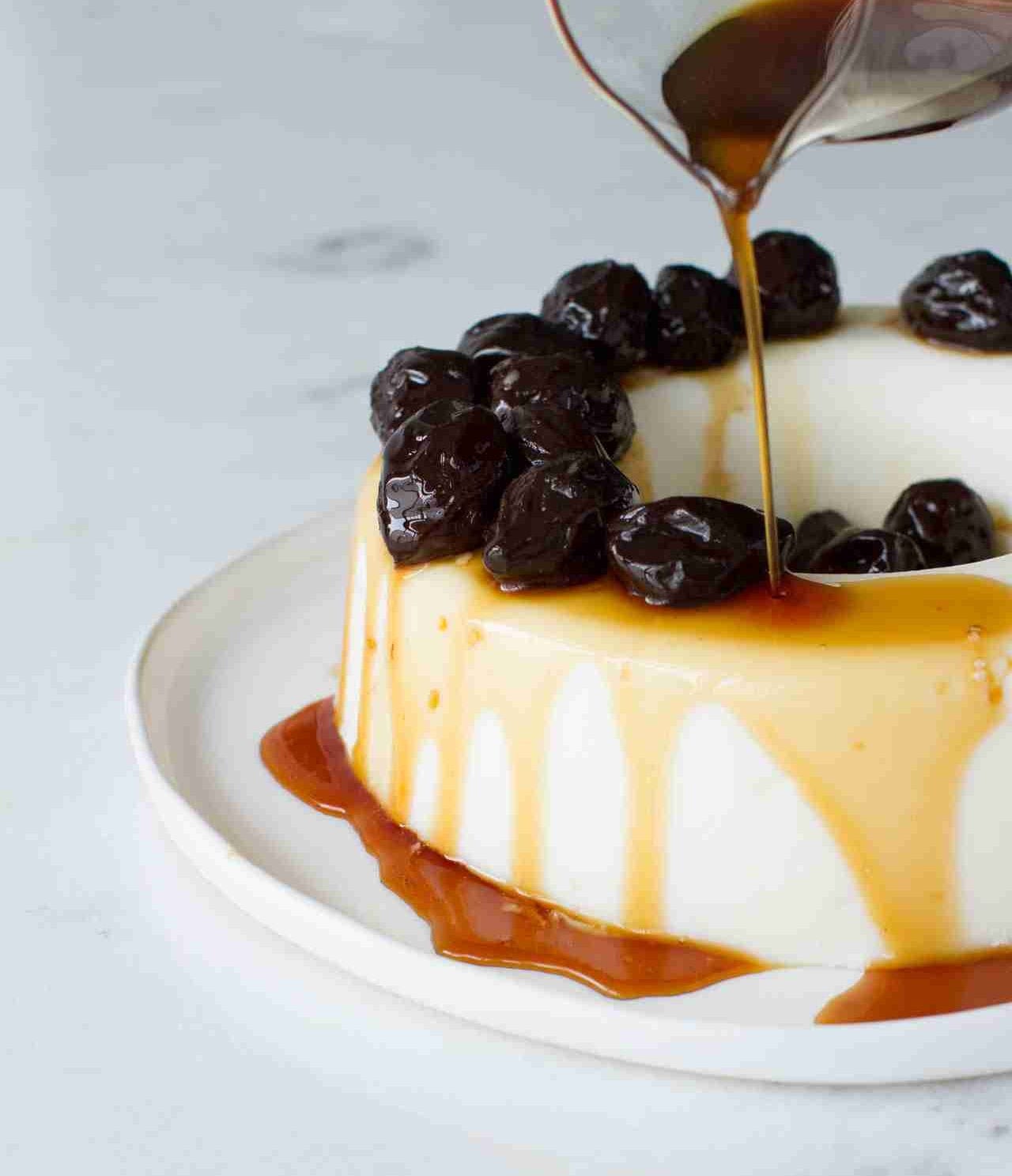
Growing up, these Pots de Crème were my mom’s go-to recipe for any impromptu dessert need—whether it was a sweet, quick stop of unannounced friends (which is such a beautiful, casual aspect of our culture that I cherish immensely), a busy weekend, or a quick fix for a sweet tooth. Not that I believe a sweet tooth can ever truly be cured.
Back in the day, she also transformed these into cake fillings, sometimes mixing chopped prunes directly into the crème, and other times layering crème and prunes between the cake layers. The leftover rum-flavored syrup was used to soak the sponge, giving it a grown-up taste. Ten-year-old me felt so special when she was allowed a small slice of it.
For this recipe, I used sweetened condensed milk, but it could easily be swapped for sugar or coconut sweetened condensed milk to make it dairy-free. It's also gluten-free, as cornstarch is the thickening agent. However, I've learned that some people find the texture of cooked cornstarch a little too glutinous. If that bothers you, substitute it with all-purpose flour for a creamier texture without the gloopiness. Fortunately, it doesn’t bother me.
Mom passes her crème through a strainer to get rid of any lumps. I don’t. I find that whisking it properly (and vigorously) does the job, but the choice is yours. She also uses only prunes in the fruit stew, which I love because the prunes become soft in the center, soaked in rum, while still holding their shape, offering a satisfying bite. I used a mix of prunes, cherries, cranberries, and golden raisins simply because I had the right amount left over from a bunch of little dried fruit bags I had on hand. So, make do with what you have, too.
These are wonderfully easy to make ahead, however, they’d need to be served cold (yet, in my world, they taste better warm). If you’d like to prepare them this way, be sure to cover them with plastic wrap in contact with the custard to avoid the thin skin that naturally forms on the surface.
While I love the combination of coconut and prunes, I also think this coconut custard would pair beautifully with a refreshing raspberry coulis (particularly in spring), a generous spoonful of orange peel marmalade, or even a dark chocolate sauce. There’s so much room for creativity here, and in any direction you go, I hope you bring plenty of love and care to this humble recipe—after all, it’s a dish fit for a queen! 😉
Coconut Pots de Crème with Rum-Stewed Dried Fruit
Makes 4 to 6 portions
For the Coconut Custard
1 can (13.5 oz) full-fat pure coconut milk (I like Trader Joe's)
1 can (14 oz) sweetened condensed milk (I like La Lechera)
3 tbsp cornstarch
1 vanilla bean pod or 1 tsp vanilla paste (optional)
For the Fruit Stew
1 1/2 packed cups of prunes or mixed dried fruit
1 cup dark rum (or water)
1/2 cup water
3 tbsp granulated sugar or honey
1 stick of cinnamon
1 tablespoon vanilla extract (optional)
Make the Coconut Custard:
In a small, heavy saucepan, combine the sweetened condensed milk, half of the coconut milk, and the vanilla bean pod, if using.
In the remaining coconut milk in the can, whisk in the cornstarch to dissolve, then pour this mixture into the saucepan with the other ingredients.
Over medium heat, bring the mixture to a boil, whisking constantly. Once it reaches a boil, reduce the heat to medium-low.
Continue to whisk for about 5 minutes until the custard thickens completely. Be vigilant as it thickens quickly and can burn, so keep the heat in check.
Using a ladle, pour the custard into small cups or a larger bowl for family-style serving. Allow it to cool at room temperature while you prepare the fruit sauce.
Make the Fruit Stew:
In another small, heavy saucepan, combine the dried fruit, rum (or water), water, sugar (or honey), and cinnamon stick.
Bring the mixture to a boil over medium heat, stirring occasionally. Watch carefully as the alcohol burns off.
Simmer for about 10 minutes, until the fruit softens and the liquid thickens to a syrupy consistency.
Remove from heat and stir in the vanilla extract.
Spoon the warm fruit stew over the custard and serve.
Bon appétit!





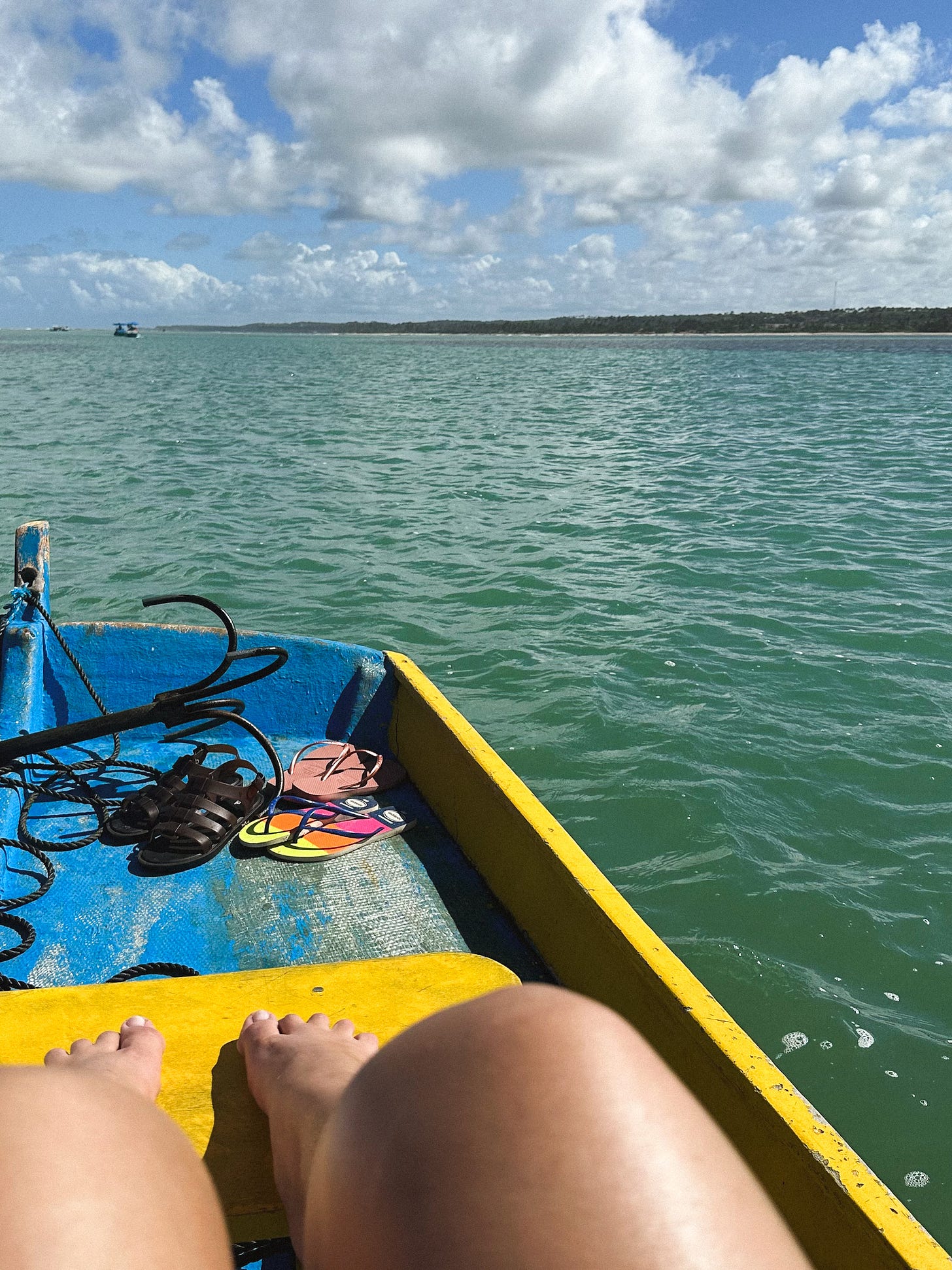
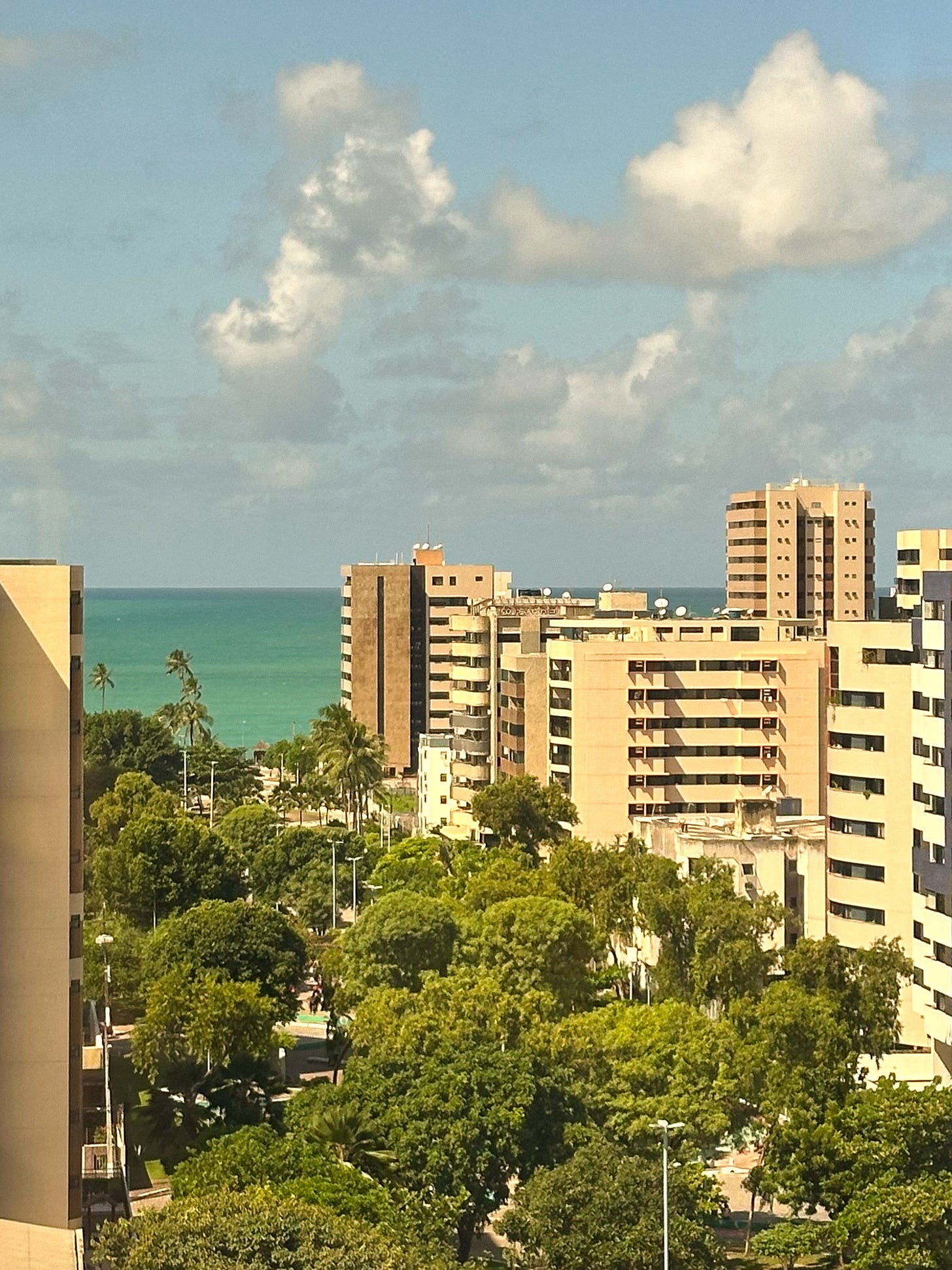
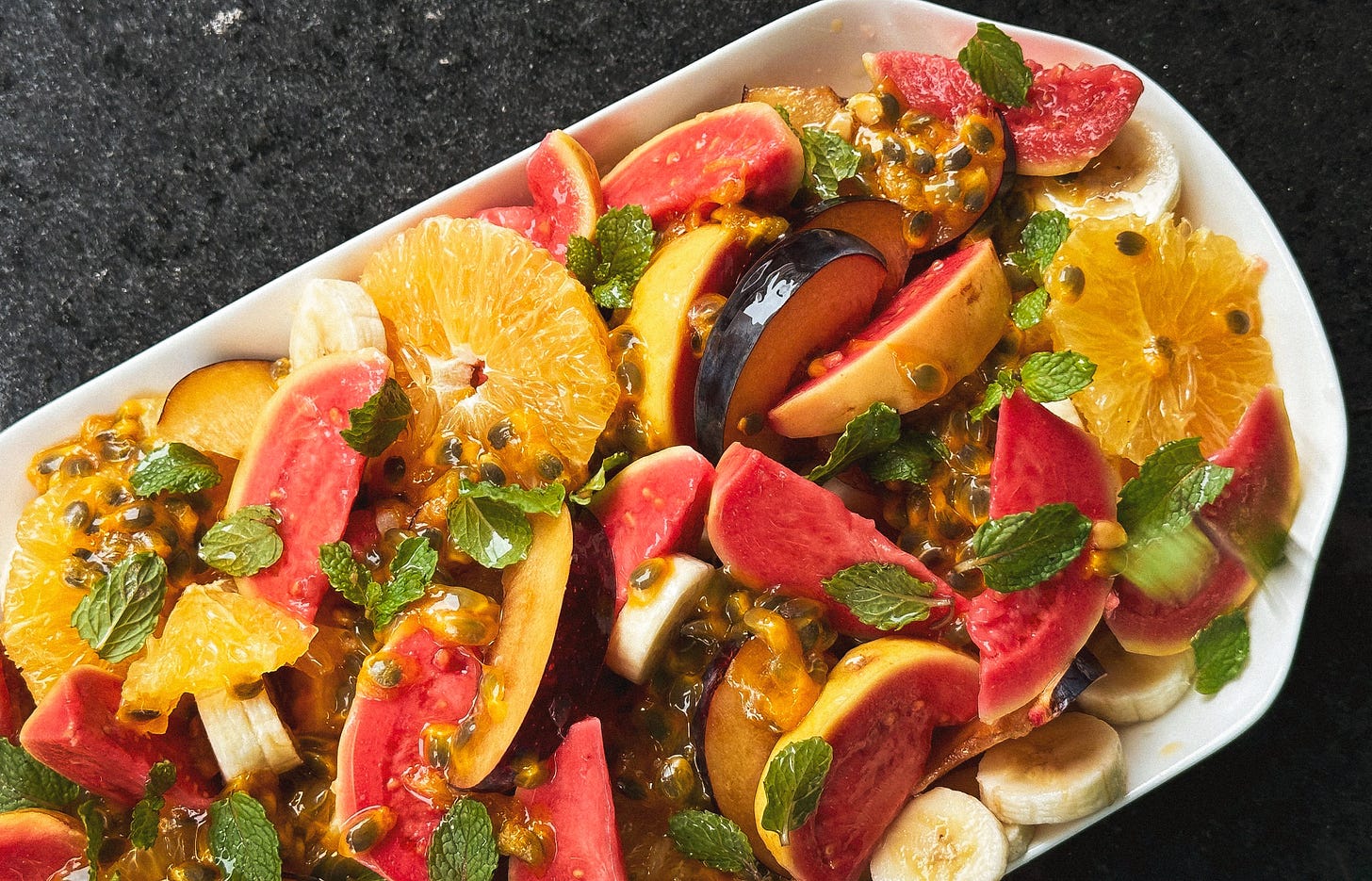
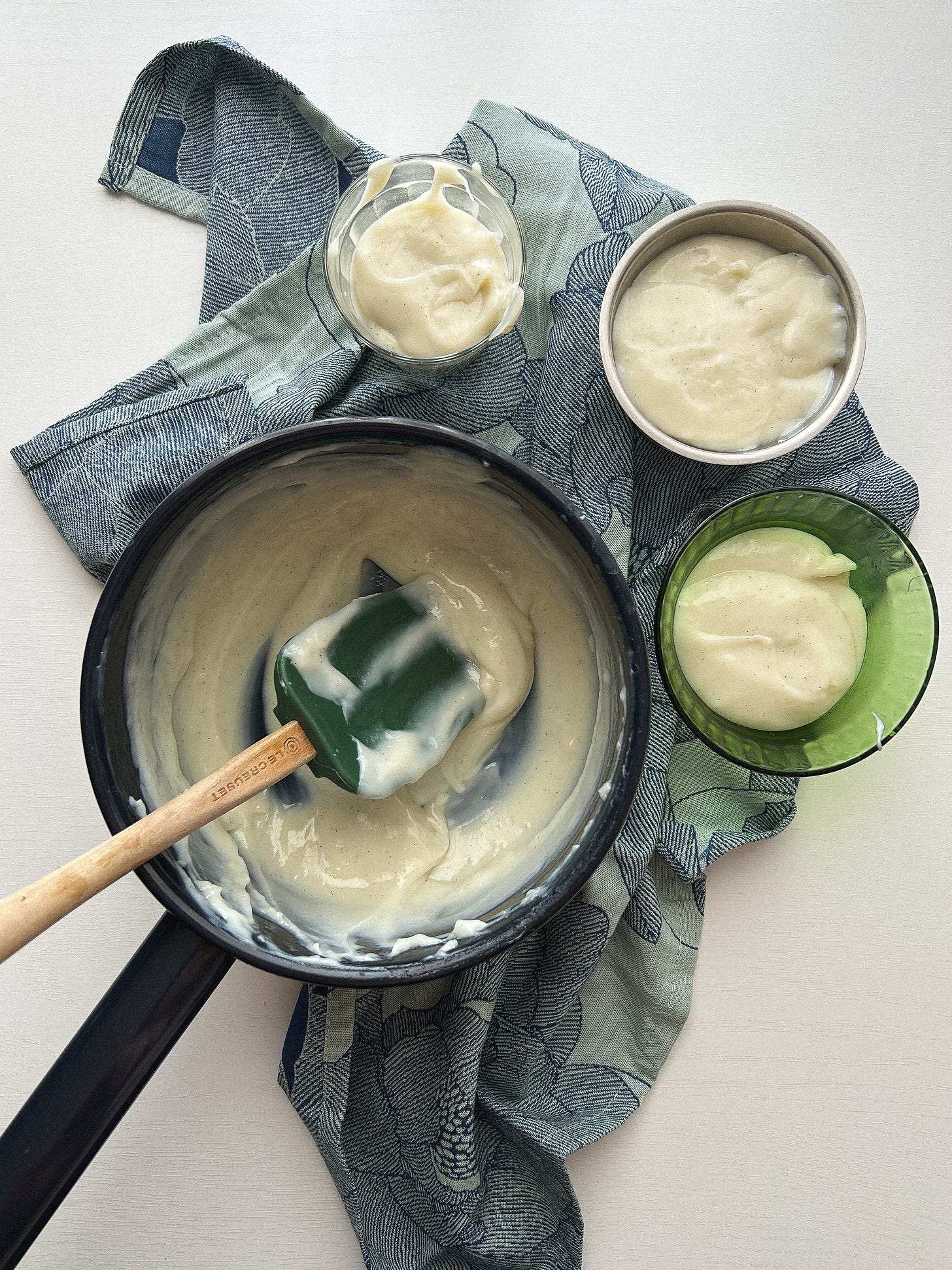
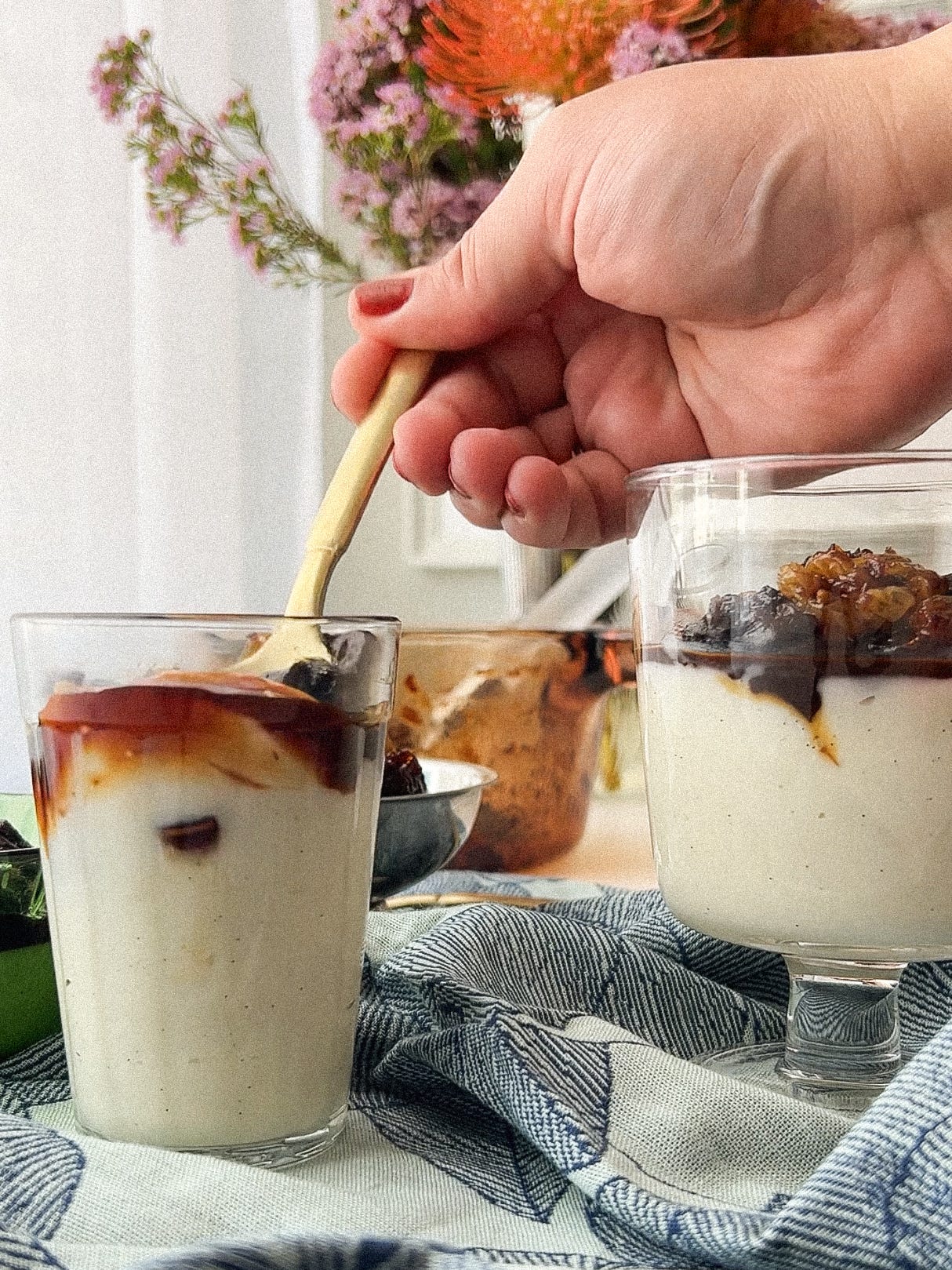


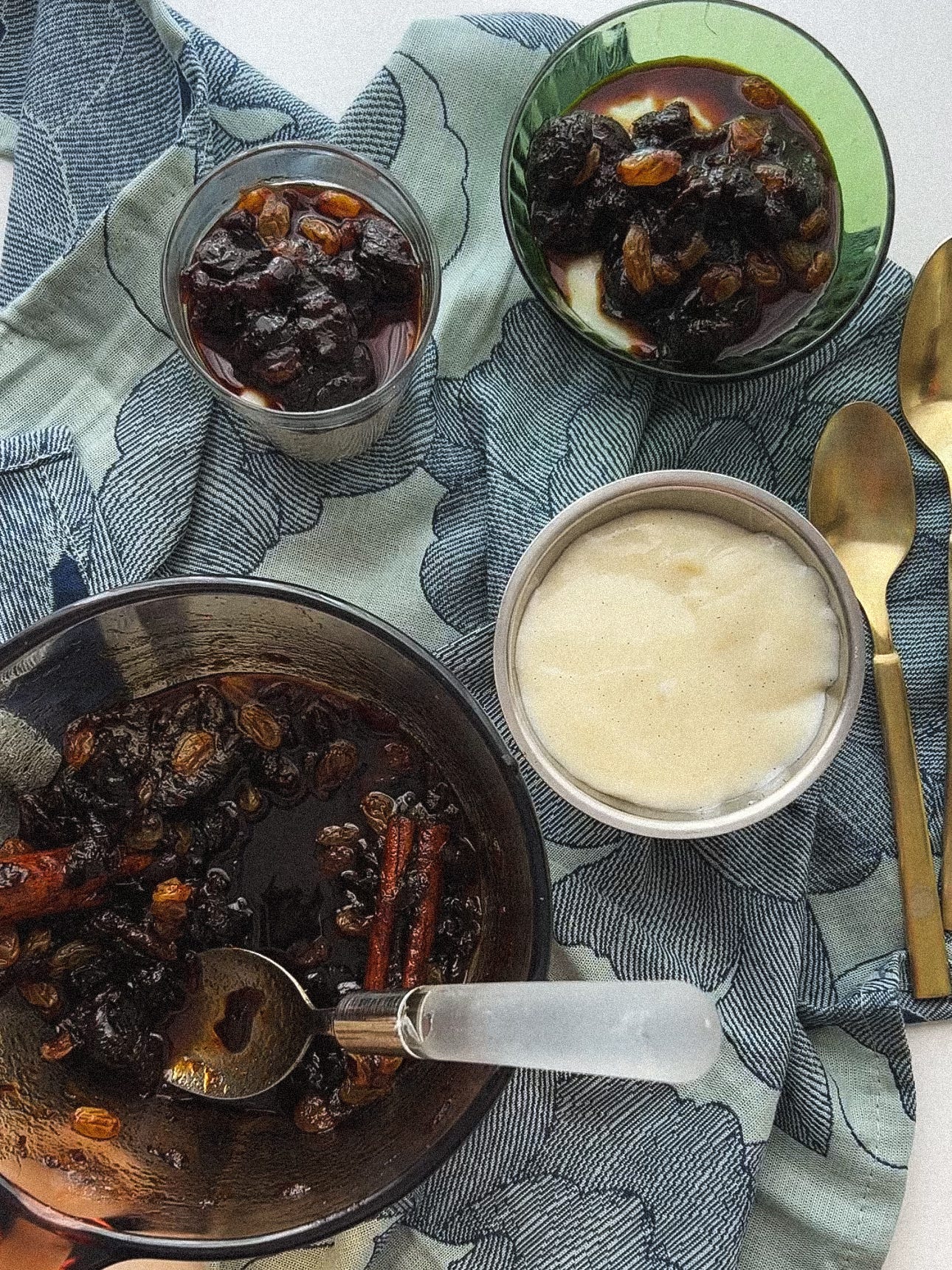


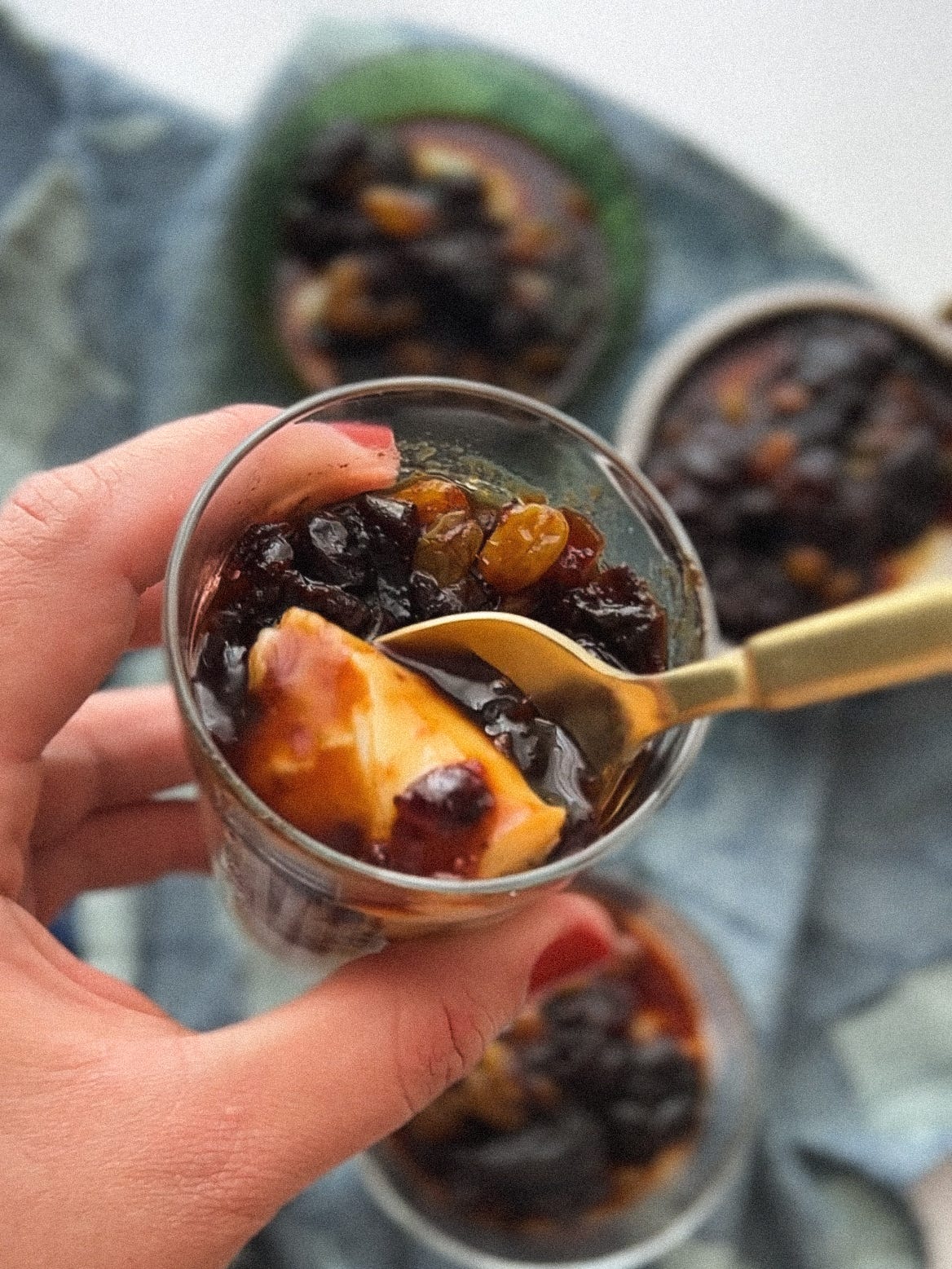
What a beautiful homage to Iemanja amiga 💙💙 may we all ebb and flow and rinse and repeat in the magic of our oceans… my favorite place on earth and my highest sense of belonging é quando mergulho no mar, especialmente o nosso 🫶
Jaíne! Everything about this story is beautiful - thank you "mille fois" for sharing it with us. And may Yemanja guide all of us through choppy waters. I love you - xoxo Dorie